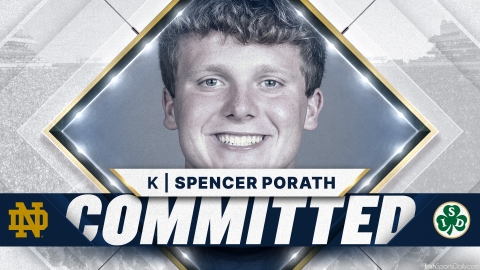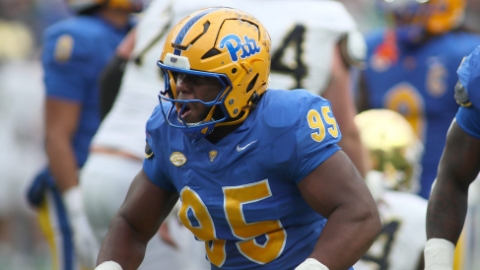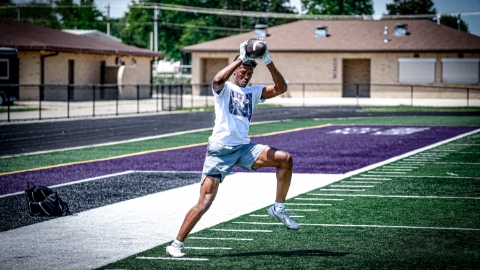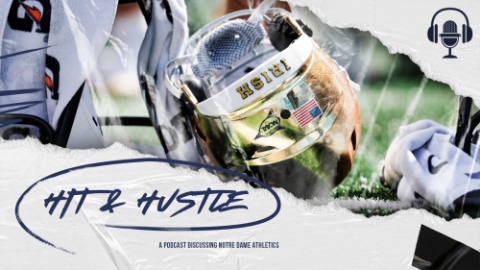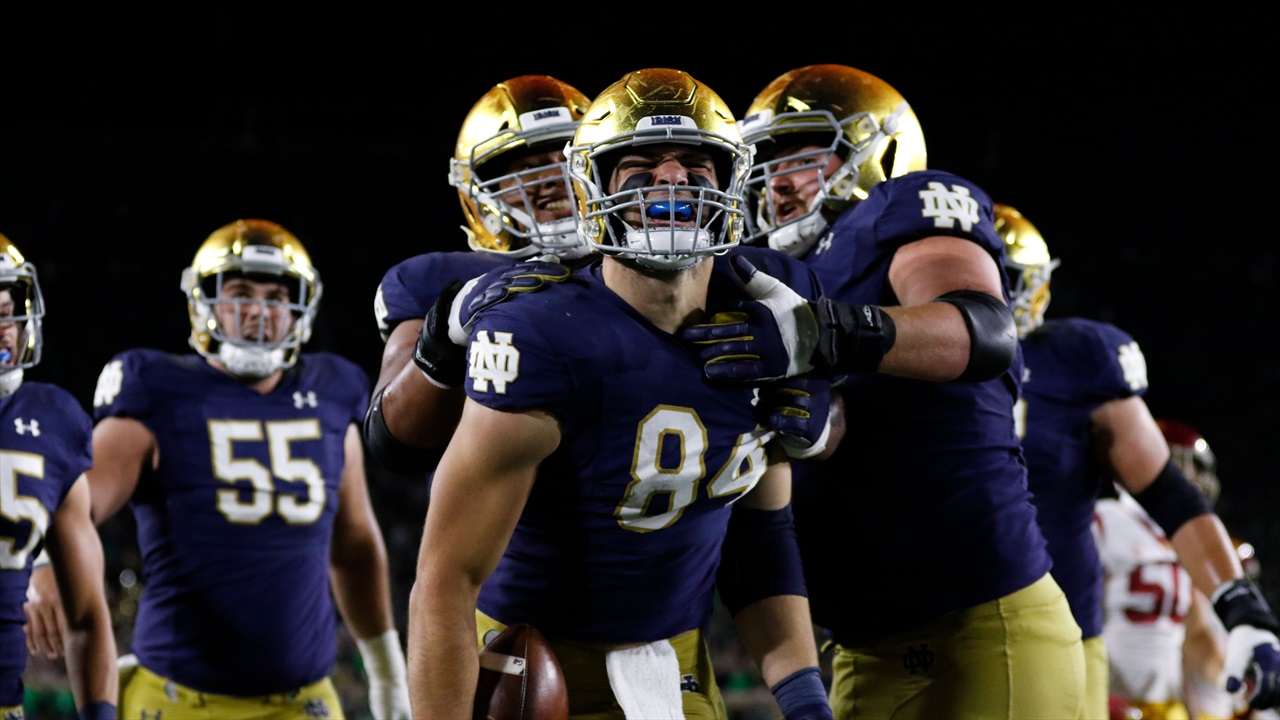
Another NFL Draft has come and gone and it was another good day for Notre Dame with six players selected. That makes 45 in 10 drafts for Brian Kelly.
The number looks good until you see that Michigan has 31 in the last five drafts, including 10 in 2020. Jim Harbaugh hasn’t won enough when you consider the extra NFL talent on his roster compared to Kelly (both have 47 wins in the last five seasons, although Kelly is leading 33 to 26 in the last three). But the question has to be asked, how many more games could Kelly have won with more NFL Draft picks on his roster?
We don’t know the answer, but it definitely wouldn’t be less. More NFL talent means more wins (unless you're Michigan). It’s no coincidence that the other four in the top-five schools for draft picks this year were LSU, Ohio State, Alabama, and Clemson (tied for fifth with Florida, Georgia, and Utah).
For Notre Dame to routinely be in the top schools in producing NFL talent every year, the easy answer always seems to be they need to recruit better. Signing more elite prospects would make a difference, but is there another way to look at it? Maybe there is based on which states produce the most talent.
It’s no secret that states like Texas (34), California (29), Georgia (21) and Florida (18) have a ton of great players every year, but I’m not sure if this necessarily means Notre Dame should be focusing more on all of those states.
Out of draft picks from the Brian Kelly era (the 2008 to 2016 recruiting cycles plus early entrant Cole Kmet), the Irish had only two picks from Texas out of the 11 players they signed from the state. California was worse with only two of 19 drafted (Ian Book can help that next year). Florida is just as bad with three of 22. I even took out the specialists for those numbers.
To put out a blanket statement that they need to add more from those three states would be incorrect. If anything, they need to do a better job of evaluation in those states or finding players who are better fits for the program.
On the other hand, they signed four from Georgia during that same time period and all four were drafted (Jamoris Slaughter, TJ Jones, Stephon Tuitt, and Isacc Rochell). It’s not easy to land talent from the Peach State when you consider all of the options surrounding there, but it’s an area they needed to attack more and they have.
Notre Dame signed six from Georgia in the 2018 and 2019 cycles.
It is interesting to see Ohio be way down on that list when it’s been such a feeder for not only Ohio State, but MAC schools, Cincinnati, Kentucky, and a good amount of the Big Ten. It’s worth noting that Kelly has had only two draft picks from Ohio (Kyle Rudolph and Deshone Kizer) out of 20 players signed from 2008 to 2016. That should likely double with Liam Eichenberg and Tommy Kraemer next year.
Diving deeper into who they have signed from Ohio, it’s pretty clear that most of those guys were in a lower tier as recruits than the guys Ohio State would want. Rudolph, Eichenberg, and Kraemer are obvious exceptions, but a good majority of them were Notre Dame winning battles with those other programs I mentioned who typically target recruits from Ohio.
Much like Notre Dame deciding to hit Georgia harder in recent cycles, they have wisely backed off of Ohio signing only two players from the state from 2017-2020. One of those was Zeke Correll, an offensive lineman that Ohio State wanted. That doesn’t include 2021 commit Lorenzo Styles Jr., an elite prospect and Ohio State legacy.
Illinois and Indiana did not make that list and though Notre Dame has had some success in recent years there (six players from Indiana drafted and five from Illinois), the reality is that those states don’t have enough overall talent to expand what Notre Dame already does.
So is there anything Notre Dame can learn from seeing where most of the draft picks played their high school? Maybe a little, but they seem to have learned more from their own experiences with players in certain states. That may pay off more for them than focusin on the big picture of where most players are drafted.
